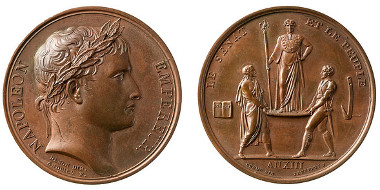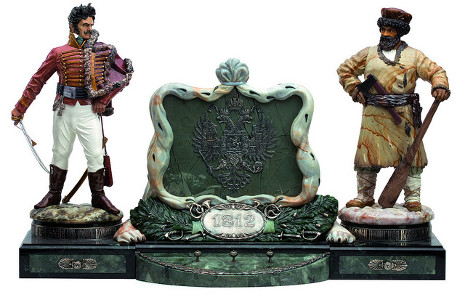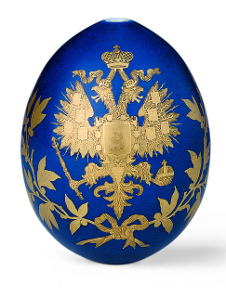March 5, 2015 – Spring, 200 years ago. Napoleon slipped back to France from his exile on the island of Elba. The “Hundred Days” of his rule began. Once again, Napoleon tried to turn the wheel of time back in his favour. Only on 18 June 1815 did the nightmarish “scourge of Napoleon” end with his defeat at Waterloo.
Bronze medal: Coronation of Napoleon in Paris 1804. © Liechtenstein National Museum.
Shortly after Napoleon’s abdication, a certain Mr. Palmer – a collector from London – went to the coin and medal mint in Paris and bought the entire set of over 130 bronze medals depicting the emperor. The tanner and bookbinder Gainier created a leather casing for the medals. It features an embossed imperial eagle and drawers with holes that precisely fit the size of each medal. This unique little coin cabinet tells the history of Napoleon between 1796 and 1815 in a fascinating way and is now on public display for the first time.
Bronze medal: Wedding of Napoleon with Marie Louise von Österreich, 1810. © Liechtenstein National Museum.
The medals themselves span an almost twenty-year period in which much of Europe – from Madrid to Moscow and from Berlin to Naples – was beset by war and suffering. The continued survival of the Principality of Liechtenstein, which was seriously affected by all these developments, hung in the balance.
Sculpture of a Russian officer and a Russian farmer. © Liechtenstein National Museum.
Europe was left reeling from events which would eventually lay the foundation for many nation states. Introduced by Napoleon on 21 March 1804 and frequently referred to as the “Napoleonic code”, the “Code civil” (Civil Code) redefined the rights of the citizen in France and in many other states, too. It still remains the code on which many statute books are based.
The so-called “Napoleonic era” left distinct marks on Europe which have endured right up to the present day. In 1806 Napoleon granted Liechtenstein its sovereignty, which the Principality managed to preserve in 1814/1815 thanks to the skilful diplomacy and actions of Johann I Joseph, Prince of Liechtenstein. Many other small states that once belonged to the Holy Roman Empire of the German Nation – which was dissolved in 1806 – and other territories ceased to exist and were merged into larger states at the time.
King Georg III. recognizes the accession of Prince Johann I. von Liechtenstein to the “Schlussakte” of the Congress of Vienna, 9 June 1815. © Liechtenstein National Museum.
This fateful time for Europe and for Liechtenstein is presented both in this unique collection of medals and in original documents from the Princely Collections that have never been available for public viewing until now. They include unique documents which other great rulers of the time – Emperor Franz I of Austria, Tsar Alexander I of Russia and King George III of the United Kingdom – had addressed to Prince Johann I. Militaria from the Princely Collections and other items on display enhance the whole picture which the exhibition intends to convey.
“Egg of the Tsar”. St. Petersburg, ca. 1890. © Liechtenstein National Museum.
The exhibition is accompanied by a 140-page catalogue in German, featuring 120 plates. It costs CHF 20.00 and is available from the museum shop.
The Napoleonic era as mirrored in its medals
19 February to 28 June 2015
Liechtensteinisches Landesmuseum (Liechtenstein National Museum)
Städtle 43, P.O. Box 1216
9490 Vaduz
Principality of Liechtenstein
Opening times: Tue, Thu to Sun: 10am-5pm, Wed: 10am-8pm, Mon: closed
Admission: CHF 8.00, reduced. CHF 5.00
More information on the exhibition you may find on the website of the Liechtenstein National Museum.
A lot of interesting information on Napoleon provides the website of the International Napoleonic Society with articles, videos, congresses etc.









